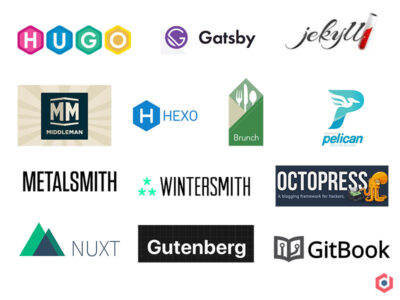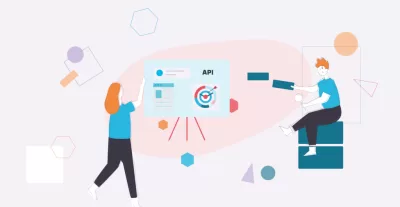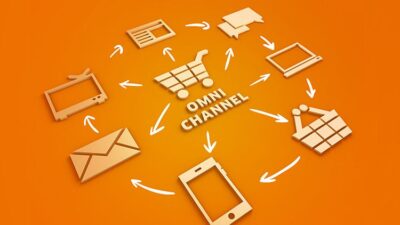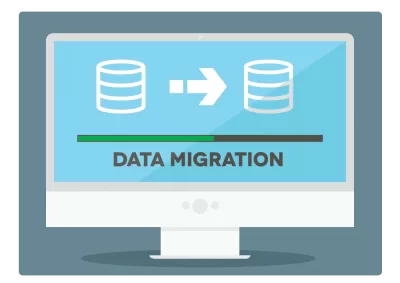Are you tired of the limitations of traditional ecommerce platforms? If so, you may want to consider headless ecommerce. This innovative approach to online selling allows for greater flexibility and customization than standard ecommerce platforms.

Headless ecommerce separates the front-end and back-end of your online store, giving you the freedom to choose the technology and tools that work best for your business. This means you can create a unique user experience that aligns with your brand and meets the needs of your customers.
Plus, with a headless approach, you can easily integrate with other systems and channels, such as social media and mobile apps. There are many technologies to use to build the front-ent, such as React, Angular, or Vue.js, while the back-end ecommerce platform can be powered by any ecommerce software, such as Magento, Shopify, or WooCommerce.
Understanding Headless Ecommerce
If you’re looking for a way to take your ecommerce site to the next level, headless ecommerce might be the solution you need. By decoupling the front-end presentation layer from the back-end ecommerce platform, headless ecommerce offers a range of benefits that can help you improve your site’s performance, scalability, and flexibility.
Benefits of Going Headless
One of the key benefits of headless ecommerce is that it allows you to create a more flexible and scalable ecommerce site. By separating the front-end presentation layer from the back-end ecommerce platform, you can easily update and modify your site’s design and user experience without having to make changes to the ecommerce platform itself.

Another advantage of headless ecommerce is that it allows you to create a more personalized and targeted customer experience. By using a headless architecture, you can easily integrate with third-party tools and services, such as personalization engines or recommendation engines, to deliver a more tailored experience to your customers.
Challenges and Considerations
While headless ecommerce offers a range of benefits, it also comes with some challenges and considerations. For example, because the front-end presentation layer is managed separately from the back-end ecommerce platform, you will need to ensure that the two systems can communicate effectively with each other.
You will also need to consider the cost and complexity of implementing a headless ecommerce architecture, as well as the skills and expertise required to manage and maintain the front-end presentation layer.
1. Headless Ecommerce Platforms
As headless ecommerce gains popularity, businesses are looking for platforms that can support this new approach. Here are some of the top headless ecommerce platforms available:
Criteria for Selection
When selecting a headless ecommerce platform, there are a few key criteria to consider:
- API capabilities: The platform should have robust APIs that allow for easy integration with other systems and tools.
- Flexibility: The platform should be flexible enough to support a wide range of front-end technologies and frameworks.
- Scalability: The platform should be able to handle high levels of traffic and orders without slowing down.
- Ease of use: The platform should be easy to use and manage, even for non-technical users.
Popular Platforms Overview

Some of the most popular headless ecommerce platforms include:
- BigCommerce: BigCommerce offers a headless ecommerce solution that includes APIs for easy integration with other systems. The platform is also highly scalable and offers a range of tools for managing your online store.
- Shopify Plus: Shopify Plus offers a headless solution that allows for easy integration with other systems and tools. The platform is also highly customizable and scalable.
- Magento: Magento offers a headless solution that allows for easy integration with other systems and tools. The platform is also highly customizable and scalable.
Open Source vs Proprietary
When choosing a headless ecommerce platform, you may also want to consider whether you prefer an open-source or proprietary solution. Open-source platforms offer more flexibility and customization options but may require more technical expertise to manage. Proprietary platforms are typically easier to use and manage but may be more limited in terms of customization options.
2. Frontend Technologies for Headless Ecommerce
As a developer, you have several options when it comes to choosing frontend technologies for headless ecommerce. Some of the most popular options available to you are;
Static Site Generators
Static site generators, such as Gatsby and Jekyll, are becoming increasingly popular for headless ecommerce. They offer fast page load times, easy deployment, and the ability to create dynamic content using APIs. Additionally, static site generators are easy to use and require minimal maintenance.

Progressive Web Apps
Progressive web apps (PWAs) are web applications that function like native apps. They offer a seamless user experience, offline functionality, and push notifications. PWAs are built using web technologies such as HTML, CSS, and JavaScript, and can be deployed on any device with a web browser. They are a great option for headless ecommerce because they provide a fast and engaging user experience.
JavaScript Frameworks
JavaScript frameworks, such as React and Vue, are powerful tools for building headless ecommerce sites. They offer a high level of flexibility and customization, making it easy to create unique and dynamic user experiences. Additionally, JavaScript frameworks provide a robust set of tools and libraries to help you build complex applications quickly and efficiently.
3. Backend Considerations
When implementing a headless ecommerce solution, it is important to consider the backend infrastructure to ensure that it is capable of handling the increased demands of a decoupled architecture. This section contains some of the key considerations that you should keep in mind when planning your backend.
API Management
One of the primary benefits of a headless ecommerce solution is the ability to use APIs to connect your frontend and backend. However, this also means that you need to have a robust API management system in place to prevent unauthorized access and ensure that your APIs are performing optimally.

You should consider using an API gateway to manage your APIs, which can help to simplify the management of your API endpoints and provide a layer of security. Additionally, you should implement rate limiting and throttling to prevent excessive API usage and ensure that your backend systems are not overwhelmed.
Security
Security is a critical consideration when implementing a headless ecommerce solution. With a decoupled architecture, your frontend and backend are separate, which means that you need to ensure that both systems are secure.
You should implement secure communication protocols, such as HTTPS, to protect data in transit. Additionally, you should use authentication and authorization mechanisms to ensure that only authorized users can access your backend systems and data.
Data Handling
With a headless ecommerce solution, you need to ensure that your backend systems can handle the increased data load that comes with a decoupled architecture. This includes handling product information, customer data, and order information.
You should consider using a database that is designed for high performance and scalability, such as a NoSQL database. Additionally, you should implement caching mechanisms to improve performance and reduce the load on your backend systems.
4. Headless Commerce Strategies

When it comes to headless commerce, there are several strategies that can help you make the most of this approach. Here are some key strategies to consider:
Content and Commerce Integration
One of the primary benefits of headless commerce is the ability to integrate content and commerce seamlessly. This means you can easily incorporate content into your ecommerce site, such as blog posts, videos, and other types of multimedia. By doing so, you can provide your customers with a more engaging and informative shopping experience.
Personalization Techniques
Personalization is becoming increasingly important in ecommerce, and headless commerce can help you deliver more personalized experiences to your customers. By leveraging customer data and analytics, you can create personalized product recommendations, targeted promotions, and customized content. This can help you increase customer loyalty and drive more sales.
Omnichannel Approach
Another key benefit of headless commerce is the ability to take an omnichannel approach to selling. By decoupling the front-end presentation layer from the back-end commerce engine, you can easily deliver a consistent user experience across multiple channels, such as mobile apps, social media platforms, and in-store kiosks. This can help you reach more customers and increase your overall sales.

5. Implementation and Migration
Migrating to a headless ecommerce platform can be a daunting task, but with proper planning and execution, the transition can be smooth and seamless. Here are key considerations and best practices for implementing and migrating to a headless ecommerce platform effectively.
Planning the Transition
Before embarking on the migration, it is important to have a clear plan in place. This should include a detailed roadmap outlining the steps involved in the migration process, as well as a timeline for each step.
It is also important to consider the impact of the migration on your existing systems and processes. This may include updating integrations with third-party systems, such as payment gateways and shipping providers, as well as training staff on the new platform.
Data Migration Best Practices
Data migration is a critical component of any ecommerce platform migration. It is important to ensure that all data is migrated accurately and securely.
One best practice is to perform a thorough audit of your existing data before migration. This will help identify any data inconsistencies or errors that need to be addressed before the migration.
Another best practice is to perform a test migration before the actual migration. This will help identify any potential issues or errors that may arise during the migration process, allowing for them to be addressed before the actual migration.
Maintaining SEO During Migration
Maintaining SEO during migration is crucial to ensure that your website maintains its search engine rankings. One best practice is to create a comprehensive redirect plan that redirects all old URLs to their corresponding new URLs.

It is also important to ensure that all metadata, such as titles and descriptions, are migrated correctly to the new platform. This will help maintain the relevance and accuracy of your website’s search engine listings.
6. Future Trends in Headless Ecommerce
Emerging Technologies
As headless ecommerce continues to grow, emerging technologies are likely to play a significant role in shaping the future of this industry. One such technology is artificial intelligence (AI), which can help online retailers to better understand their customers and personalize their shopping experiences. AI can also be used to automate certain tasks, such as product recommendations and customer service.
Another technology that is likely to have an impact on headless ecommerce is blockchain. By providing a secure and transparent way to track transactions, blockchain can help to build trust between online retailers and their customers. It can also be used to create loyalty programs and other incentives to encourage customer engagement.
Adoption in Different Industries
While headless ecommerce is already being used by a variety of industries, there are still many that have yet to adopt this approach. One industry that is likely to see increased adoption of headless ecommerce in the future is healhthcare. By using headless ecommerce, healthcare providers can offer patients a more convenient way to purchase medical supplies and equipment, as well as access to telemedicine services.

Another industry that is likely to benefit from headless ecommerce is the travel industry. Using headless ecommerce, travel companies can offer customers a more personalized and seamless booking experience, as well as access to additional services such as travel insurance and car rentals.
Impact on Consumer Behavior
As headless ecommerce continues to evolve, it is likely to have a significant impact on consumer behavior. One trend that is already emerging is the rise of mobile commerce. With more and more consumers using their smartphones to shop online, retailers will need to ensure that their ecommerce platforms are optimized for mobile devices.
Another trend that is likely to emerge is the growing importance of social media in ecommerce. By using social media platforms such as TikTok, Instagram, and Facebook to promote their products, retailers can reach a wider audience and drive more sales. Additionally, social media can be used to build brand awareness and engage with customers in a more personalized way.
By staying up-to-date with emerging technologies, adopting headless ecommerce in different industries, and understanding the impact on consumer behavior, retailers can position themselves for success in this exciting new era of ecommerce.
7. Case Studies and Real-world Examples
Headless ecommerce has been gaining popularity among businesses, and several companies have already implemented this approach to their ecommerce platforms. Here are a few examples of how headless ecommerce has helped businesses improve their online sales:

Example 1: Nike
Nike’s headless ecommerce platform allows them to deliver personalized content to their customers. The platform uses a combination of customer data, browsing history, and purchase history to create a unique shopping experience for each customer. This approach has helped Nike increase their sales and customer loyalty.
Example 2: Walmart
Walmart’s headless ecommerce platform has enabled them to deliver a seamless shopping experience to their customers across all devices. The platform uses a single API to manage all their ecommerce channels, including their website, mobile app, and in-store kiosks. This approach has helped Walmart improve their customer engagement and increase their sales.
Example 3: Sephora
Sephora’s headless ecommerce platform has allowed them to provide their customers with a fast and responsive shopping experience. The platform uses a microservices architecture to ensure that each component of their ecommerce platform can be scaled independently. This approach has helped Sephora improve their website speed and reduce their bounce rate.
These examples demonstrate how headless ecommerce can benefit businesses of all sizes and industries. By decoupling the frontend and backend of their ecommerce platform, businesses can provide their customers with a personalized, seamless, and fast shopping experience.


